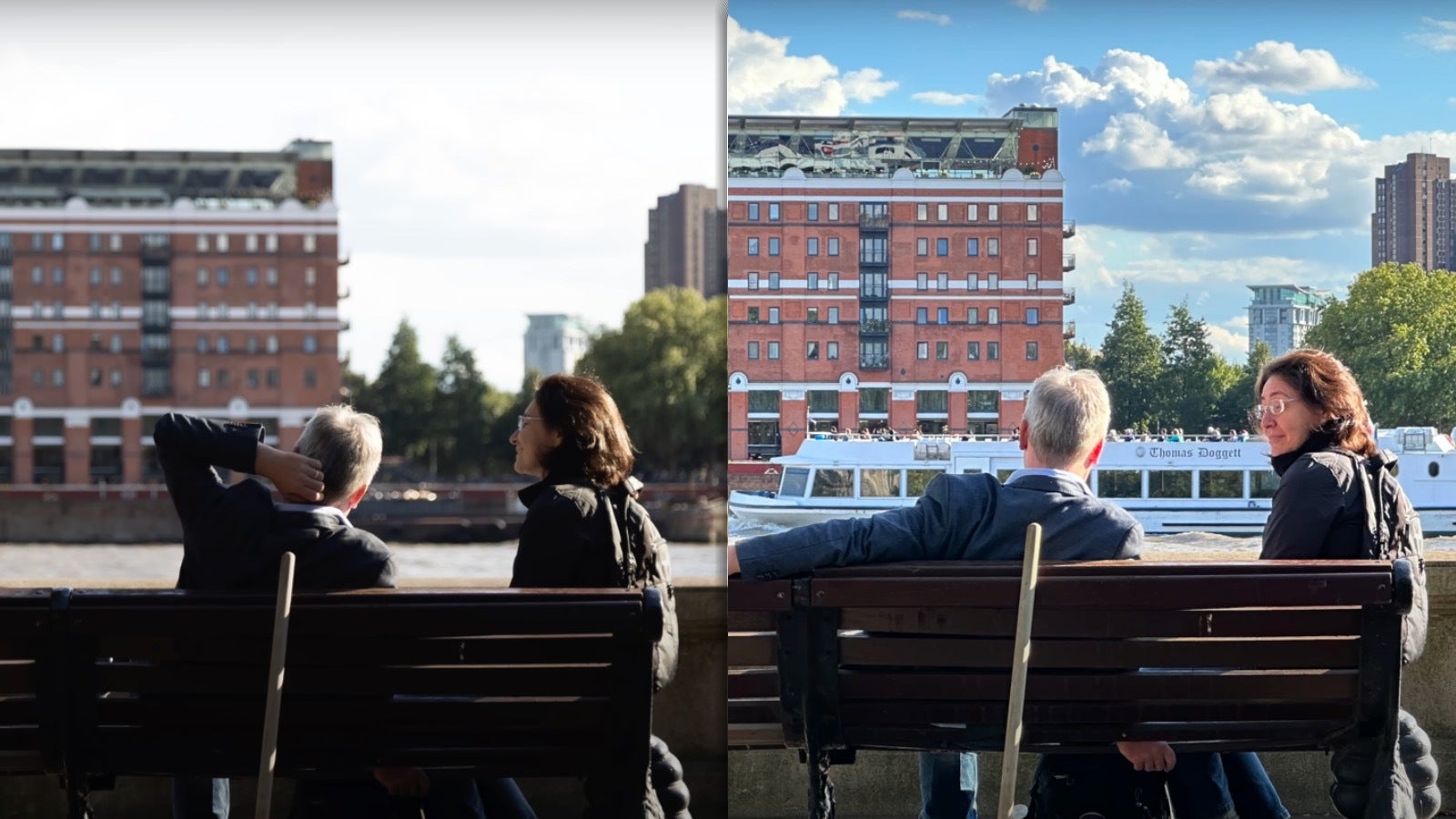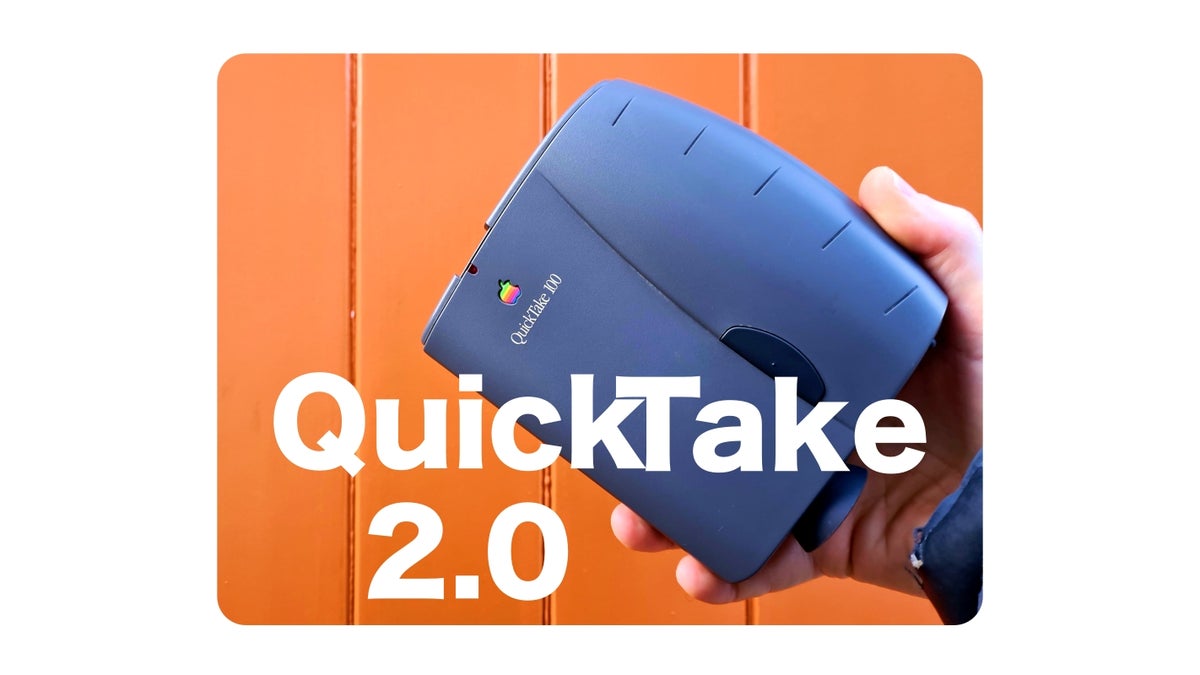Although some Apple nerds will be Quick to Take you on a journey down memory lane to tell you Apple has already made a “real camera”, most people have no idea the “Apple QuickTake 100” ever existed.
Often seen as a major milestone in digital photography (and arguably the first-ever digital camera), the QuickTake was Apple’s first (and only) step into the world of digital cameras. If you don’t count the iPhone – which I don’t.
Smart home cameras tend to fall into two categories – indoor and outdoor ones (or both). They are used for home security monitoring, child and pet monitoring, smart home integration and automation (turn on my lights – and that sort of thing), and visitor and package delivery monitoring.
And while that’s certainly a worthy market segment, it’s not exactly the type of camera tech nerds would get excited for.
Why is Apple making a home security camera but avoids entering the dedicated photo/video camera market?
Sure, it seems like there’s money in the home security camera business but what about something more fun and useful for creators?
I’ve recently been doing some research on what the best content creator/vlogging camera is, and it quickly became obvious that there’s one “pocket camera” that rules them all in terms of features and practicality – the DJI Osmo Pocket 3.
In a nutshell, DJI has cleverly paired a single 1-inch sensor with a stellar gimbal, with great battery life, super-fast charging, an awesome tilting display, pro-grade audio and video features, and even decent photography capabilities, which starts at just $520.
The result is a 150g super-stable video camera with a great video quality, and excellent low-light performance thanks to the hardware stabilization and a dedicated night video mode.
The DJI Osmo Pocket 3 is incredibly popular and enjoys some of the most positive reviews I’ve seen for any tech product in recent times – in fact, it’s often out of stock on Amazon.
Tim Cook & Co should target the DJI Osmo Pocket 3-dominated market for vloggers, content creators, and travelers
Which brings me to the actual question of this story… Why isn’t Apple making an Osmo Pocket 3 competitor? With Apple’s ecosystem pull and potential iPhone integration as well as video editing facilities (FinalCut Pro), people are going to eat up a $600 Apple content creator/vlogging camera.
In case you’re wondering, the DJI Osmo Pocket 3 offers several practical advantages over an iPhone when it comes to capturing high-quality video and photos in specific situations.
Here are the ones I can think of:
Stabilization
As I mentioned, the Osmo Pocket 3 features a built-in 3-axis gimbal that stabilizes the camera, allowing for smooth, cinematic shots even while walking or moving.
And although recent iPhones feature pretty great OIS-EIS, the Osmo Pocket 3’s mechanical gimbal offers dramatically superior performance – especially in low-light, where the iPhone has to apply tons of noise reduction to make up for the poor video quality caused by the small sensor and the EIS, which struggles in the dark.
Compact size + it’s a camera
The Osmo Pocket 3 is extremely small and portable, with the camera and gimbal folding into a pocket-sized form. This makes it easier to carry around discreetly and shoot on the go without drawing too much attention.
And While iPhones are relatively portable, they are still bulkier and larger, especially if you’re trying to use accessories like a tripod or stabilizer.
Not to mention the fact that having a dedicated camera makes you concentrate on doing the creative work instead of swiping through Instagram, because the iPhone is also… your phone. And your everything.
More “Professional” video quality than the iPhone 16 Pro’s
Although both can record in identical resolutions, frame rates, and pro-grade formats suitable for editing, from all the footage I’ve seen, the Osmo Pocket 3’s automatic/default video mode simply takes more “professional” looking videos than the iPhone 15/16 series.
Sure, some of the reasons for that are obvious – like the stabilization, the larger sensor and dedicated night video mode.
However, Apple has something to learn about making videos coming out of the iPhone’s camera look natural – and that’s where DJI gets it right.
Unlike the iPhone, the Osmo Pocket 3 offers balanced HDR that doesn’t look overdone, it doesn’t have any of the nasty iPhone lens flares, and if you get close enough (because the focal length is pretty wide), you can get some great bokeh.
My iPhone can record 5-hour long 4K videos but this doesn’t beat the convenience of having a dedicated camera in your pocket
While an iPhone like my iPhone 15 Pro Max is estimated to record 4K video for 5-6 hours before dying, the Osmo Pocket 3 is designed to capture footage for longer.
While the internal battery in the Osmo will record 4K video for around 2 hours, the Creative Combo kit offers an added battery handle, which can bring battery life to 4 hours. However you can also get much larger battery handles that can extend battery life to 6-7 hours.
The Osmo also takes just 20 minutes to charge from 0-100%, which sounds very convenient even if you find out the Osmo is dead. Meanwhile my iPhone 15 Pro Max takes closer to 2h to charge fully.
Not to mention the fact that if your phone is dead, this would mean your camera is also dead. So, having a separate camera is a peace of mind.
iPhone can’t match the level of creativity coming with a camera like the Osmo Pocket 3
Another very underrated Osmo Pocket 3 feature (at least if you don’t know about it), is that a camera like the Osmo can be your own cameraman thanks to the incredible subject/object-tracking features.
Thanks to DJI’s algorithm, the camera can lock onto a subject you select and track it continuously – even in a busy room.
This opens up a whole new realm of possibilities and creative shots, particularly if you’re shooting solo, or “vlogging”. The gimbal also allows for creative camera movements, such as smooth pans, tilts, and tracking shots that would be difficult to achieve with a handheld phone. This opens up more professional filming possibilities.
People won’t stop using iPhones to take videos/photos, but the iPhone can totally share the stage with a dedicated pocket camera made by Apple


DSLR vs iPhone photo comparison.
And to bring it back to the DJI Osmo – this is currently the only viable option for a gimbal-powered compact camera of this kind. In other words, DJI has basically no competition if you want something like the Osmo – which seems to be the most popular alternative to popular pocket cameras like the Sony ZV1 or Sony RX100 VII, which offer optical zoom (which the Osmo doesn’t) but are bulkier, heavier, and often take lower quality videos (especially in the dark).
So, the red carpet is sort of rolled out for Apple to come in and bring creators and enthusiasts into the Apple ecosystem with a killer Osmo Pocket 3 competitor.
